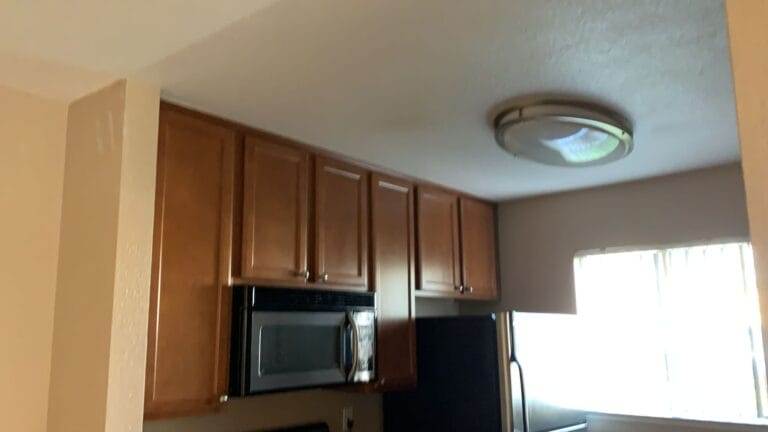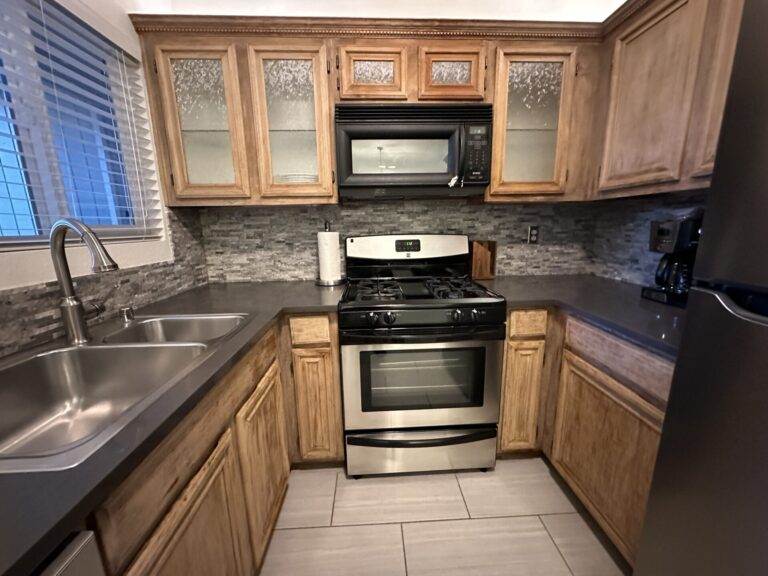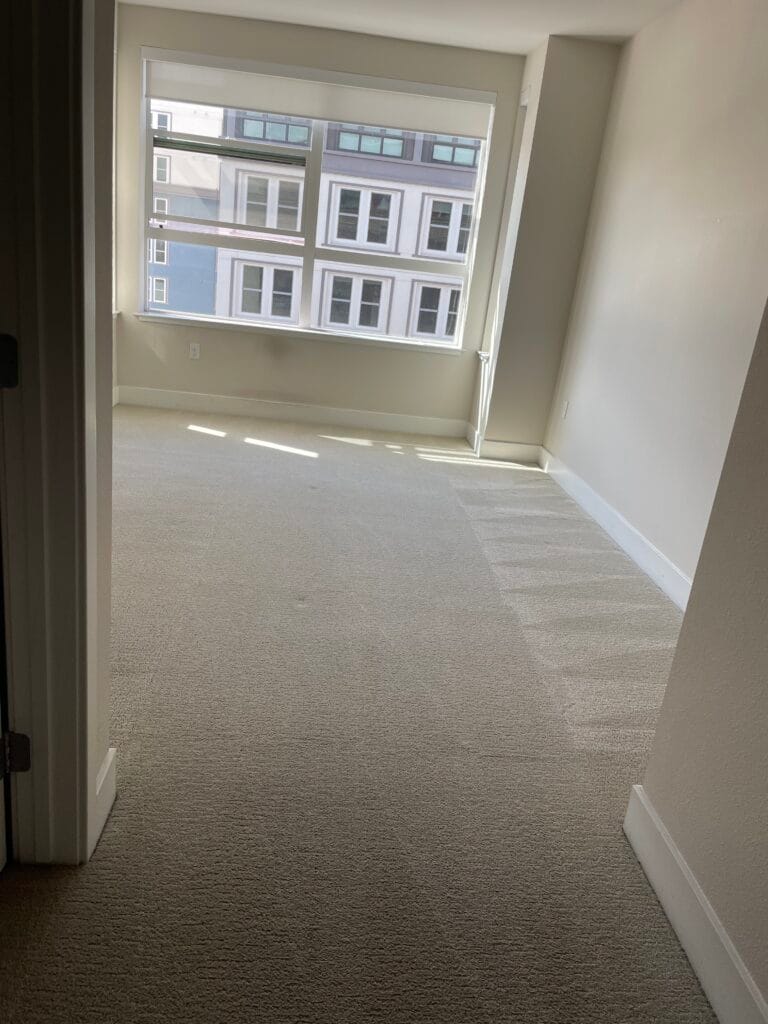There is no one-size-fits-all approach to cleaning your home, as everyone has their own methods for tackling issues like food stains, dirty dishes, and other messes. However, it is common to make cleaning mistakes and overlook certain areas in your cleaning routine. But don’t fret! We have compiled a list of 17 cleaning mistakes you might be making and how to fix them.
1. Not Cleaning Your Cleaning Tools
Cleaning your cleaning supplies might seem illogical at first. Since they are already soaked in cleaning solution, one would assume that scrub brushes stay clean automatically. However, it is important to note that your cleaning tools often retain germs and unpleasant residue from previous scrubbing endeavors.
To guarantee that you do not bring back bacteria or create unnecessary untidiness, make sure to:
- Clean the vacuum rollers and the surface by removing hair and any remaining particles.
- Make sure to regularly clean your appliances, including the dishwasher.
- Change towels every two to three days.
- Replace your sponge (one of the dirtiest areas in your house) with a new one or sanitize it by putting it in the microwave for two minutes while it is still wet.
- To avoid rust stains, it is important to clean the interior of your washing machine.
2. Allowing specific areas to go unnoticed
No matter how hard you try, it is common for some areas to be overlooked during cleaning. The situation gets worse when these overlooked spots are frequently used surfaces, as they can harbor germs and pass them on through every contact. Additionally, some spots may accumulate a large amount of dust, triggering or exacerbating allergy symptoms.
Remember to turn off the light switches, remotes, electronics, and doorknobs as you go through your cleaning routine. Additionally, take the time to remove dust from your air filters, plants, and window coverings, ensuring a healthier breathing environment for everybody in your household.
3. Applying pressure to blemishes on clothing and floor coverings.
In the English language, we are instructed to vigorously clean tough stains, be it on a sofa or on the beige carpet that has been left with muddy pawprints. We do not intend to disregard the traditional method of exerting physical effort, but it may not always be the most effective approach to remove a stain, particularly when dealing with fabrics, carpeting, and other delicate materials.
If you attempt to vigorously clean these materials, the stain will likely penetrate further into the fibers, making it extremely challenging or even impossible to remove. Instead, consider soaking the affected area with club soda or cleaner and gently dabbing it to eliminate the stain. Repeat this process as necessary until the stain disappears.
4. Using Hot Water on Stains
Using warm water can be more effective than cold water in dealing with residue and stubbornly-attached food, but it is not always the ideal option for eliminating stains. Particularly with stains that are protein-based, like blood, hot water can actually make the stain more difficult to remove.
It is advisable to consistently utilize cold water along with hydrogen peroxide, club soda, or store-bought cleaning products to remove the stain. It is best to avoid using the dryer on stained clothing until you are certain that the stain has been completely removed, as doing so can potentially make the stain permanent.
5. Utilizing bleach to eliminate mold on any type of surface.
The belief that if something is not visible, it is forgotten applies to bleach’s effectiveness in eliminating mold. While bleach may appear to effectively remove mold on surfaces like tubs and tile, it only fades the stains on porous materials like drywall without actually getting rid of the spores. In certain situations, using bleach may even worsen the mold problem.
Instead of using bleach to lighten the spots, eliminate mold from surfaces using borax or hydrogen peroxide. It is important to note that this method is only effective for small areas. If the mold covers an area larger than 10 square feet, it is advisable to seek assistance from a professional mold remediation specialist in your area.
6. Overloading your cabinet with cleaning products.
If you have too many specialized cleaning products for stainless steel, calcium buildup, or glass taking up space in your cleaning cabinet, you may have too many unnecessary items. Often, you probably already have what you need in your pantry or medicine cabinet.
For example, baking soda and vinegar are capable of effectively cleaning various areas within the kitchen, bathroom, and laundry room. In fact, vinegar outperforms commercialized cleaners in terms of cleaning glass and mirrors. Additionally, shaving cream is suitable for cleaning stainless steel, eliminating the need to rush out and purchase specialized cleaners.
7. Lack of Cleaning Routine
It is crucial to maintain a record of your cleaning duties just as it is crucial to adhere to them. Numerous small tasks are necessary to keep your home clean, and it can be challenging to remember all of them. Without a reliable system in place, you may overlook certain areas or not clean as effectively.
If you want to stay organized, make a personalized home cleaning checklist and arrange the tasks in a way that suits you. If you feel overwhelmed and are concerned about forgetting important chores, think about hiring a professional house cleaner in your area.
8. Using Too Much Cleaning Product
Using a large amount of cleaning products may not result in a cleaner home, but it can lead to increased expenses in the long run. For instance, if you put an excessive amount of detergent or fabric softener in your laundry, your clothes may feel sticky and greasy instead of being clean and fresh.
The aforementioned statement applies to various kinds of cleaning products as well. If you spray excessive amounts of product on your floor or countertops, it will almost certainly result in leaving undesirable residue. When uncertain, it is advisable to adhere to the instructions provided on the back of the product packaging.
9. Not Emptying Your Vacuum
If your new vacuum cleaner doesn’t appear to collect dirt no matter how many times you move it back and forth in the same spot, it is likely that the bag needs to be emptied. When there is an excess amount of dust and debris in the vacuum bag, not only will it be unable to pick up new dirt, but it may also scatter the old dirt. As a rule of thumb, it is recommended to empty the vacuum bag after each intensive use and replace the bag entirely every three months.
10. Using the Wrong Vacuum Attachments
If you are solely using the main vacuum head for cleaning, you are not utilizing the correct method of vacuuming. This large tool is not intended to effectively clean all areas of your home. Consequently, you should depend on vacuum attachments more frequently.
One way to clean small and hard-to-reach areas that your regular vacuum cannot access is by using the wand attachment. For tricky spots such as window tracks or baseboards, the crevice attachment is perfect for vacuuming dust and debris. To effectively remove crumbs from your couch, the upholstery tool is the ideal option.
11. Employing an incorrect approach to cleaning floors.
Before you begin mopping your floor, it is important to consider the type of flooring you have. Each type of flooring requires different methods of cleaning. Soaking hardwood floors, for example, should be avoided as prolonged exposure to moisture can cause the wood to warp. Instead, it is recommended to use a damp mop to effectively clean hardwood floors without causing any damage.
When dealing with tile floors, it is important to think about the most effective approach to clean the grout between the tiles. It is also essential to make sure that you are using the appropriate cleaning product for your specific flooring. You should buy cleaning products that are specifically designed for your type of flooring and conduct some research to find the most optimal cleaning methods for each type of floor.
12. Putting wooden utensils in the dishwasher for cleaning.
Using a dishwasher may not effectively clean wooden utensils and could potentially harm them, particularly if done repeatedly. It is recommended to manually wash your utensils with soap and hot water instead, avoiding any soaking, and allowing them to dry naturally.
If your utensils have come into contact with microbes that could be harmful, such as when cooking raw meat, using soap and water alone may not be sufficient. Instead, it is recommended to soak these tools in bleach for a few minutes and then rinse them.
13. Scrubbing Your Walls
When the moment comes to clean your walls, there may be an inclination to grab a sponge and begin scrubbing. However, this can lead to the removal of paint, causing scratches and leaving your walls in a worse condition. Instead, it is better to rely on a few methods, such as utilizing a non-abrasive sponge and a gentle cleaning detergent, to wash your walls flawlessly on every occasion.
14. Using an incorrect solution to clear drains.
If your drains become clogged, it is crucial to choose the appropriate cleaning product that will not harm your pipes, as some substances such as lye can cause damage. Generally, it is advisable to initially attempt unclogging your drains using natural methods, like pouring boiling water, before resorting to stronger solutions like liquid drain cleaners.
15. Dusting With Furniture Polish
Furniture polishes have a high oil content, which can result in an increased accumulation of dust on your furniture. In contrast, it is recommended to use a slightly damp microfiber cloth to remove dust from surfaces and a multi-purpose cleaner to effectively clean smudges or fingerprints.
16. Washing Windows in the Wrong Weather
While it may be tempting to clean your windows while the sun is out, it is actually not the ideal time to do so. In reality, cleaning them during this period will cause your cleaning solution to evaporate faster and will likely result in noticeable streaks.
Likewise, it is not advisable to wash on days with rain as it may result in water streaks that can damage your efforts. Instead, carry out this activity when the weather is moderate (between 60 and 70 degrees Fahrenheit) and the sky is overcast.
17. Mixing Cleaning Products
Not only is it unsafe, but combining cleaning products will not effectively clean your home. In some situations, the active ingredients in the products may neutralize each other. However, in the most severe instances, they have the potential to release extremely dangerous and deadly gases. This is especially true when mixing ammonia and bleach.






